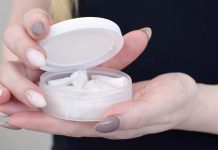
Nanoscale tweezers can perform ‘biopsies’ on individual cells, therefore extracting single molecules from live cells, without destroying them.
Researchers from Imperial College London, England, used electrical impulses and developed ‘tweezers’ designed to extract single DNA, proteins and organelles from living cells without corrupting the cell. The team found that extracting single molecules could provide new insights into how healthy cells function and what goes wrong in diseased cells.
The significance of the study
A new technique, developed by a team led by Professor Joshua Edel and Dr Alex Ivanov at Imperial College London, enabled the researchers to study the way in which extracting single molecules from live cells could be done without destroying them. The research published today in Nature Nanotechnology, could help scientists create a ‘human cell atlas’, generating new insights into how healthy cells function and what goes wrong in diseased cells.
Professor Joshua Edel, from the department of chemistry explained: “With our tweezers, we can extract the minimum number of molecules that we need from a cell in real time, without damaging it. We have demonstrated that we can manipulate and extract several different parts from different regions of the cell – including mitochondria from the cell body, RNA from different locations in the cytoplasm and even DNA from the nucleus.”
Extracting single molecules
The tweezers are created from a sharp glass rod terminating with a pair of electrodes made from a carbon-based material much like graphite. The tip is less than 50 nanometres in diameter and is split into two electrodes, with a 10 to 20-nanometre gap between them.
By applying an alternating current voltage, this small gap creates a powerful highly localised electrical field that can trap small contents of cells such as DNA and transcription factors. The tweezers generate a sufficiently high electric field enabling the trapping of certain objects such as single molecules and particles, therefore extracting single molecules was made easier.
The technique of extracting single molecules
This research has the potential of carrying out experiments not currently possible. For example, nerve cells require much energy to send messages across the body, so they contain many mitochondria to help them function. However, by adding or removing mitochondria from individual nerve cells, researchers could better understand their role, particularly in neurodegenerative diseases.
Dr Alex Ivanov, from the Department of Chemistry at Imperial, concludes: “These nanoscale tweezers could be a vital addition to the toolbox for manipulating single cells and their parts. By studying living cells at the molecular level, we can extract individual molecules from the same location with unprecedented spatial resolution and over multiple points in time.
“This may provide a deeper understanding of cellular processes, and in establishing why cells from the same type can be very different to each other.”







